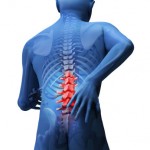Pain Relief For Gardening
Gardening is cited as a definite cause for back ache. To get pain relief for gardening, this article describes some tips recommended by doctors. These include warming up before starting the work, having enough water for muscle hydration, mixing up the various gardening activities, maintaining proper posture while mowing and keeping proper posture while weeding. Other advice for gardening without pain includes keeping the spine straight while lifting garden rubbish, switching sides while raking, wearing proper gardening shoes and taking breaks during work to regain your original posture. Hiring a local person to do your work could be advisable. If the aggravation persists, treatment includes heat and ice, exercise, chiropractic treatment and regular weight loss exercises are recommended.
Gardening tips to avoiding back soreness with Dr. Jeff from Illinois Back Institute, hosted by Kevin Butler – 1985 Super Bowl Chicago Bear Kicker.
Pain Relief For Gardening
Learn how to prevent gardening back ache and get pain relief in this article.
Dr. Brian Morrison, President & Clinical Director of Morrison Chiropractic and Adjunct Faculty Member at the University of Maryland School of Medicine is very familiar with the back pains created by summer gardening. Every summer his practice sees an uptick in patients complaining of back pain from yard work.
Dr. Morrison recommends following these 10 tips for gardening to help you keep your back in good shape all summer long.
1. Warm Up – Before beginning; take a few minutes to warm up your muscles by doing some dynamic warm up exercises. These include going for a brisk 5 – 10 minute walk around the yard, jumping jacks, walking lunges and arm circles.
2. Hydrate – Muscles need water to function optimally. When you maintain your body’s water levels during use, you allow your muscles to coordinate with each other properly and support your physical activity. Adequate water levels in your body can help prevent the onset of muscle cramps or spasms and help prevent dehydration.
3. Mix It Up – Vary your gardening tasks each time. Do a little pruning work, raking, bending work, digging, etc. Don’t continuously perform any particular activity for a long period.
4. Mowing – Leaning forward as you push the lawn mower can strain your back. Be sure to maintain proper posture and push with your arms and legs instead of your back.
5. Weeding – Bending over at the waist for prolonged periods is a sure way to cause your back muscles to start complaining. Kneel on a rubber gardening mat, sit on a wheeled gardening stool, or sit directly on the ground instead. Make sure you have all your tools close at hand.
6. Lifting – When lifting bags of dirt, mulch or potted plants, keep your back straight and bend with your knees and hips (not your back) when reaching down. The power for your lift comes from your buttocks and legs. If you are picking up piles of grass, leaves or other yard waste, make the piles small to decrease the weight.
7. Raking – Most people use the rake with their dominant hand only. This causes one side of your body to be overused. Try switching sides every few minutes, even though it will feel awkward. Your back, neck and arms will thank you.
8. Wear Supportive Shoes – Yard work can put a lot of strain on your feet and legs. Good foot and arch support can stop some of that strain from reaching your back. Ditch the sandals and flip-flops and opt for a supportive pair of shoes instead.
9. Take Breaks – Taking your time will make it less likely for injuries to occur. Pushing yourself to the point of exhaustion can cause you to get sloppy with good posture and lifting techniques, setting you up for injury.
10. Outsource – Consider hiring a local student to do the heavy work that strains your back. Lots of young people can’t find summer jobs and one may be more than willing to spend a few hours a week working for you. As an added bonus, you might just turn them into a gardener for life!
What can you do if you follow all of these tips and still wind up with low back pain? Dr. Morrison recommends conservative treatments including:
Heat and/or ice treatments.
Exercise, stretching techniques, chiropractic care or physical therapy to repair and strengthen muscles.
Lifestyle changes such as weight loss and regular exercise.
Propping pillows behind your back and under knees when resting to take pressure off of your lower back.
You may suffer from back pain during gardening due to improper posture while doing the work. Following some basic tips for pain relief for gardening can be helpful for preventing pain. If none of this works, you have the option for various methods of conventional treatments, or just leave the work to someone else!
Chiropractor Paul Willmon shows how to lift bags of mulch so that you don’t strain your back.
A demonstration of safe lifting, digging, brushing and raking in the garden by chiropractor Mark Kennedy.
You might also like:
Tags: pain relief for gardening















